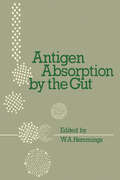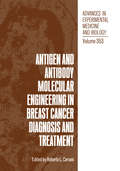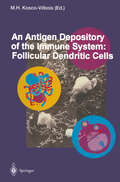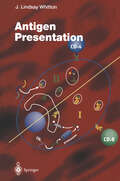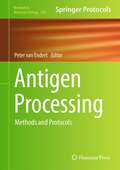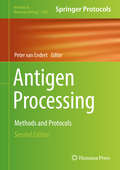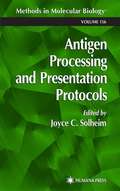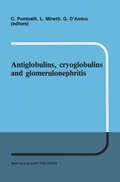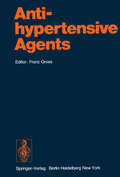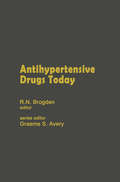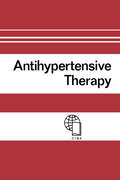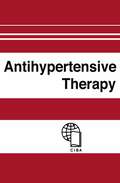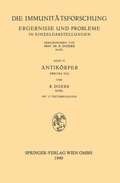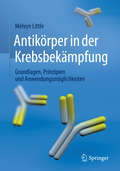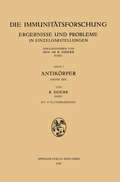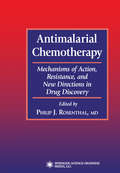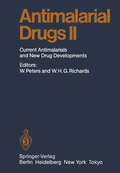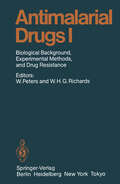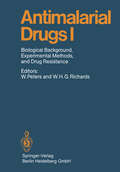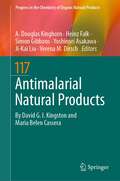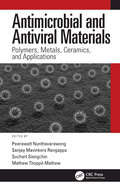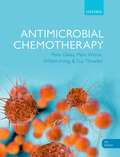- Table View
- List View
Antigen Absorption by the Gut
by W. A. Hemmingsw. A. HEMMINGS The concept that proteins can enter cells whole is a difficult one. Yet the model situations whereby this process may be studied have been known and investigated for many years. Those situations arise through the specialization required to transfer immunoglobulins synthesized by the mother to the circulation of the fetus or newborn animal, that is in the transmission of passive immunity to the young. This always entails the protein crossing a continuous cellular barrier, in the placenta or fetal membranes, or in the intestinal epithelium. The concept is hard to accept in terms of cell biology because it is difficult to envisage a mechanism whereby proteins can pass in quantity a cell membrane which is regulating the entry of solutes. Brambell has put forward an hypothesis of such a mechanism, restating it in 'The transmission of passive immunity from mother to young' in 1970. In 1974, after his death, a symposium was held in Bangor largely on this subject, published as 'Maternofetal Transmission of Immunoglobulins' . Since then two further meetings have been held on gut transfer under the title of the present volume, which is composed of papers drawn from these two meetings.
Antigen and Antibody Molecular Engineering in Breast Cancer Diagnosis and Treatment (Advances in Experimental Medicine and Biology #353)
by Roberto L. CerianiToday, advances in the area of immunology and breast cancer are made at an increasing rate, yielding an amount of information that can become unwieldy. The opportunity for scientists in this area of research to gather together to exchange results and working hypotheses represents, in my belief, a very attractive proposition. With this in mind, these workshops have been convened with two year intervals for the last ten years. In each of them, selected topics have been highlighted. The present workshop underscores the large advancements made in the molecular biology of both breast cancer associated antigens and their corresponding antibodies. Understanding the genetic information for the expression of these antigens has been recently advanced leading to preparation of molecularly engineered reagents for use in vaccination, serum assays, and immunizations for novel antibody production. In the anti-breast cancer antibody field the availability of molecular engineering approaches to humanize murine antibodies has induced intense interest in the creation of less immunogenic antibody forms that are now available for clinical testing. Clinical studies using anti-breast murine antibody continue to be carried out and are presented at this meeting establishing a base line for safety and efficaciousness in imaging and immunotherapy that it is hoped will be superseded by the humanized forms. Basic immunology and immunochemistry studies in breast cancer are also included in this workshop that demonstrate the fast pace at which this research is advancing in many laboratories worldwide.
An Antigen Depository of the Immune System: Follicular Dendritic Cells (Current Topics in Microbiology and Immunology #201)
by Marie H. Kosco-VilboisFollicular dendritic cells (FOe) are unique among cells of the immune system. While their morphological characteristics re sulted in their inclusion as a 'dendritic cell type', tt1ey differ quite significantly from the other members of the dendritic cell family. In contrast to T-cell-associated dendritic cells or the Langerhans cells found in the skin, FOe reside in highly organized B cell follicles within secondary lymphoid tissues. This site of resi dence provided a nomenclature committee in 1982 with the second descriptive factor for the derivation of their name. The cardinal feature of FOe is to trap and retain antigen on the surface of their dendritic processes for extended amounts of time and it is this feature that provides the conceptual compo nent for the title of this book. In response to an antigenic challenge, primary B cell follicles undergo dynamic events, giving rise to germinal centers which are associated with activation, expansion, and differentiation processes of B cells. The interactions of B cells with Foe and T cells in the germinal centers are essential for generating the complete repertoire of antibody isotypes obtained during an antibody response. In addition, stimuli either initiated or main tained during the germinal center reponse leads to production of high affinity antibodies through the processes of somatic muta tion and clonal selection. In this context, FOe act as a pivotal source of antigen. They accumulate foreign proteins (e. g.
Antigen Presentation (Current Topics in Microbiology and Immunology #232)
by J. Lindsay WhittonAntigen presentation is central to the immune response, and is instrumental in ensuring that the response mounted is that best suited to the eradication of the particular microbe faced. In this volume, experts in the field provide state-of-the-art descriptions of the antigen presentation pathways. How do viruses disrupt these critical pathways, and to what effect? Do all tissues present antigen in the same way? If not, why? What are the consequences of dysfunctional antigen presentation, seen in certain genetic disorders? This book considers not only the molecular details, but also their relevance to the whole organism.
Antigen Processing: Methods and Protocols (Methods in Molecular Biology #960)
by Peter EndertAntigen processing is a biological process that prepares antigens for the presentation to special cells in the immune system called T lymphocytes. In Antigen Processing: Methods and Protocols, expert researchers in the field provide a comprehensive set of protocols for studying presentation of antigens produced in the standard processing pathways for MHC class I and class II molecules. The chapters follow chronology of intracellular processing events, ending with recognition of peptide-MHC complexes at the cell surface by T lymphocytes. Written in the highly successful Methods in Molecular Biology™ series format, chapters include introductions to their respective topics, lists of the necessary materials and reagents, step-by-step, readily reproducible laboratory protocols, and key tips on troubleshooting and avoiding known pitfalls.Authoritative and practical, Antigen Processing: Methods and Protocols is designed for beginners and experts interested in studying antigen processing.
Antigen Processing: Methods and Protocols (Methods in Molecular Biology #1988)
by Peter Van EndertThe second edition volume expands on the previous edition with new and updated chapters on the latest methods used for studying presentation of antigenic peptides produced in the standard processing pathways for MHC class I and II molecules. The new chapters cover topics such as biochemical and cellular approaches to study the impact of the endoplasmic reticulum aminopeptidases; techniques to monitor MHC class I synthesis and degradation; approaches to measure processing efficacy; description of different assays measuring MHC recycling; and protocols to produce MHC class II tetramers. Written in the highly successful Methods in Molecular Biology series format, chapters include introductions to their respective topics, lists of the necessary materials and reagents, step-by-step, readily reproducible laboratory protocols, and tips on troubleshooting and avoiding known pitfalls. Cutting-edge and comprehensive, Antigen Processing: Methods and Protocols, Second Edition is a valuable tool for both novice and expert researchers interested in studying antigen processing and venturing out further into this evolving field.
Antigen Processing and Presentation Protocols (Methods in Molecular Biology #156)
by Joyce C. SolheimAntigen processing and presentation, as a field, explores a broad range of protein interactions and functions, both intracellular (in the cytoplasm and in the endoplasmic reticulum) and at the cell surface (between T cells and MHC molecules). To investigate such a diverse array, it is necessary that biochemical, cell biology, and immunological techniques all be employed. The purpose of Antigen Processing and Presentation Protocols is therefore to detail the most up-to-date techniques being used in this burgeoning field. Such techniques include those used to question how MHC-binding peptides are generated, to test how peptides are delivered to MHC molecules, to analyze MHC peptide-binding patterns, and to assay the T-cell response to MHC/peptide. Antigen Processing and Presentation Protocols should aid both those new and those experienced in this area of research in extending the questions that can be asked and answered by the application of these current methods. For editorial assistance, I would like to thank Angela Beninga and Rachael Turnquist.
Antiglobulins, cryoglobulins and glomerulonephritis: Second International Milano Meeting of Nephrology 30 September – 1 October 1985 (Developments in Nephrology #16)
by Giuseppo D’Amico, Luigi Minetti and Claudio PonticelliRICHARD J. GLASSOCK Introducing a scientific symposium is an uncertain and difficult task. The remarks must not be too specific lest the participant's later contributions be intruded upon, yet an overview of the goals and objectives of the conference should be presented in an inquisitive and stimulating fashion. Perhaps a compromise position would be to make a few general statements and pose a limited number of questions which hopefully would then be addressed dur ing the formal or informal portions of the meeting. A conclusion incorpo of the relevance of the specific topic to the more rating some perspectives global issues of disease and its consequences might be appropriate. The goals and objectives of this conference, as set forth by its organizers, Professors Ponti celli, D'Amico and Minetti, are rather simple and straight forward; namely, to review and elucidate the immunopathophysiology of cryoimmunoglobulins and auto-antibodies to immunoglobulins (lg) and, secondarily, to explore the possible participation of these disordered states in glomerular injury. As such, this conference is principally devoted to an analysis of two properties of certain species of the globulin fraction of serum proteins, specifically the ability to self associate on the basis of immune interactions and to form insoluble aggregates when exposed to reduced ambient temperature. As we shall see, these two properties are often dis tinctly related.
Antihypertensive Agents (Handbook of Experimental Pharmacology #39)
by M. E. Conolly J. Conway D. Garrlen R. Gaunt F. Gross H. Jurevics O. Krayer V. A. Kreye J. B. Lüth R. A. Maxwell E. Meilman J. C. Melby J. A. Oates C. C. Porter B. N. Prichard M. J. Rand G. Schapel E. Schlitter H. Schmidt D. G. Shand C. A. Stone M. L. Torchiana W. B. WastilaAntihypertensive Therapy: Principles and Practice An International Symposium
by F. GrossHypertension has certainly been one of the topics most fre quently discussed at symposia, meetings, and congresses during recent years. There may be several reasons for this; three of them are obvious: firstly, the fact that a large proportion of the world's population is suffering from various forms of hypertensive disease; secondly, increasing knowledge of the pathogenesis of hypertension and of the disturbances underlying it; and, thirdly, the marked progress which has been made in antihypertensive therapy over the past fifteen years. When plans for the present symposium were being drawn up, it was felt that it should not simply bring forth just another meeting on hypertension, but should place particular emphasis on those aspects which had not been adequately discussed at previous symposia of this kind. Curiously enough, the topic which appeared to have received least attention in the past was therapy, although from the practical point of view this is by far the most important. The choice of therapy as the main theme of the whole symposium also seemed to be warranted in view of the relatively long period that had elapsed since effective antihyper tensive treatment became available; the time had in fact come now to pass judgement on the benefits as well as the shortcomings of drug treatment as available today.
Antihypertensive Therapy: Principles and Practice an International Symposium
by S. R. Naegeli A. H. KirkwoodHypertension has certainly been one of the topics most fre quently discussed at symposia, meetings, and congresses during recent years. There may be several reasons for this; three of them are obvious: firstly, the fact that a large proportion of the world's population is suffering from various forms of hypertensive disease; secondly, increasing knowledge of the pathogenesis of hypertension and of the disturbances underlying it; and, thirdly, the marked progress which has been made in antihypertensive therapy over the past fifteen years. When plans for the present symposium were being drawn up, it was felt that it should not simply bring forth just another meeting on hypertension, but should place particular emphasis on those aspects which had not been adequately discussed at previous symposia of this kind. Curiously enough, the topic which appeared to have received least attention in the past was therapy, although from the practical point of view this is by far the most important. The choice of therapy as the main theme of the whole symposium also seemed to be warranted in view of the relatively long period that had elapsed since effective antihyper tensive treatment became available; the time had in fact come now to pass judgement on the benefits as well as the shortcomings of drug treatment as available today.
Antikörper in der Krebsbekämpfung: Grundlagen, Prinzipien und Anwendungsmöglichkeiten
by Melvyn LittleAntikörper als biologische Waffe gegen den KrebsEin Buch über Historie, Entwicklung und den spannenden Einsatz von Antikörpern zur Behandlung von Krebs. Der Autor versteht es, für interessierte Fachleute, Ärzte und Laien die Grundlagen dieser neuen Technologie auf leicht verständliche Weise zu vermitteln und die wesentlichen Prinzipien unkompliziert darzustellen. Einfache und übersichtliche Abbildungen und Tabellen ermöglichen es dem Leser, die wesentlichen Informationen des Buches rasch zu erfassen.Antikörper machen heute einen großen Teil des Umsatzes für biologische Produkte in der Pharmabranche aus und ihre Bedeutung in der Krebstherapie nimmt ständig zu.Der InhaltAufbau, Eigenschaften und Herstellung von AntikörpernImpfung als Krebsprävention – Herstellung von TumorvakzinenTherapeutische Antikörper zur Behandlung verschiedener KrebserkrankungenWirkungsweise und Verwendung zugelassener AntikörperTherapeutische Antikörper als schnell wachsende Sparte biopharmazeutischer ProdukteAntikörper in klinischer Entwicklung – Ausblick in die ZukunftDer AutorProf. Melvyn Little, ehemaliger Leiter der Forschungsgruppe „Rekombinante Antikörper“ am Deutschen Krebsforschungszentrum in Heidelberg und außerplanmäßiger Professor für Biochemie an der Universität Heidelberg. Mitbegründer der Biotech-Firma Affitech in Oslo.Gründer und Vorstandsmitglied der Biotech-Firma Affimed Therapeutics in Heidelberg.Heute im Ruhestand und Biotechnologie-Consultant.
Antimalarial Chemotherapy: Mechanisms of Action, Resistance, and New Directions in Drug Discovery (Infectious Disease)
by Vassil St. GeorgievPhilip Rosenthal, MD, and a panel of leading malaria experts drawn from academia, the military, and international health organizations survey the latest scientific understanding of antimalarial chemotherapy, emphasizing the molecular mechanisms of resistance and the description of important new targets. Their survey covers the current status of malarial and antimalarial chemotherapy, the relevant biology and biochemistry of malaria parasites, the antimalarial drugs currently available, new chemical approaches to chemotherapy, and possible new targets for chemotherapy. Comprehensive and cutting-edge, Antimalarial Chemotherapy: Mechanisms of Action, Resistance, and New Directions in Drug Discovery clearly delineates all the basic and clinical research now addressing one of the world's major unresolved disease problems, work that is now powerfully driving the rapid pace of antimalarial drug discovery today.
Antimalarial Drug II: Current Antimalarial and New Drug Developments (Handbook of Experimental Pharmacology #68 / 2)
by R. Baurain P. E. Carson R. Ferone C. D. Fitch W. Hofheinz A. T. Hudson R. Leimer P. Mamalis M. Masquelier E. W. McChesney B. Merkli W. Peters R. O. Pick P. Pirson R. Richle K. H. Rieckmann H. J. Scholer T. R. Sweeney A. Trouet D. Warburton L. M. Werbel D. F. WorthThe construction of this volume has been guided by two personal convictions. Experience in the field of experimental chemotherapy, both in the pharmaceutical industry and academia, has convinced us that recent quantum technological advances in biochemistry, molecular biology, and immunology will permit and, indeed, necessitate an increasingly greater use of rational drug development in the future than has been the custom up to now. In Part l, therefore, we asked our contributors to provide detailed reviews covering the biology of the malaria parasites and their relation with their hosts, the experimental procedures including culture techniques that are necessary to take a drug from primary screening to clinical trial, and an account of antimalarial drug resistance. Our second conviction is that many research workers are all too loath to learn from the lessons of the past. For this reason we asked the contributors to Part 2 of this volume to review very thoroughly the widely scattered but voluminous literature on those few chemical groups that have provided the antimalarial drugs in clinical use at the present time. Much can be learned from the history of their development and the problems that have arisen with them in man. Some indeed may still have much to offer if they can be deployed in better ways than they are at present. This question has been taken up by several authors.
Antimalarial Drugs I: Biological Background, Experimental Methods, and Drug Resistance (Handbook of Experimental Pharmacology #68 / 1)
by A.L. Jr. Ager V. Boonpucknavig S. C. Chou K. A. Conklin D.W. Jr. Davidson R. E. Desjardins M. Fernex P.C.C. Garnham H. M. Gilles M. H. Heiffer D.W. Jr. Korte M. R. Levy G. H. Mitchell W. Peters S. Punyagupta W.H.G. Richards K. H. Rieckmann R. N. Rossan I. W. Sherman T. Srichaikul G.A.T. Targett D. C. WarhurstOf all the parasitic diseases that beset man in the warmer parts of the world, malaria is still the major cause of morbidity and mortality. In spite of intensive efforts to interrrupt its transmission malaria still threatens over 800 million people, more than one-fifth of the world's population. Malignant tertian malaria caused by Plasmodium Jalciparum probably kills a million every year. Vivax malaria temporarily incapacitates millions more. The search for antimalarial drugs, both natural and syn. thetic, has been and continues to be one of the most challenging and, at times, rewarding exercises ever undertaken by ;:;hemists and biologists. The magnitude of the effort is reflected by the fact that, in the last 15 years, well over 250000 compounds have been screened for antimalarial activity in just one programme, that carried out under the auspices of the Walter Reed Army Institute of Research, not to mention sporadic studies undertaken by other research workers and organisations. While most people engaged in the search for new drugs agree that a rational approach based on knowledge of the intimate biochemical pathways of the target cells would be ideal as well as intellectually satisfying, most are reluctantly obliged to concede that, up to the present time, the chances of success following a more or less empirical search have been far greater. Spectacular advances in molecular biology and biochemistry in recent years, however, are rapidly changing this situation.
Antimalarial Drugs I: Biological Background, Experimental Methods, and Drug Resistance (Handbook of Experimental Pharmacology #68)
by Wallace PetersAntimalarial Natural Products (Progress in the Chemistry of Organic Natural Products #117)
by A. Douglas Kinghorn Heinz Falk Simon Gibbons Yoshinori Asakawa Ji-Kai Liu Verena M. DirschThis volume begins with a short history of malaria and follows with a summary of its biology. It then traces the fascinating history of the discovery of quinine for malaria treatment, and then describes quinine’s biosynthesis, its mechanism of action, and its clinical use, concluding with a discussion of synthetic antimalarial agents based on quinine’s structure. It also covers the discovery of artemisinin and its development as the source of the most effective current antimalarial drug, including summaries of its synthesis and biosynthesis, its mechanism of action, and its clinical use and resistance. A short discussion of other clinically used antimalarial natural products leads to a detailed treatment of additional natural products with significant antiplasmodial activity, classified by compound type. Although the search for new antimalarial natural products from Nature’s combinatorial library is challenging, it is very likely to yield new antimalarial drugs. This book thus ends by identifying ten natural products with development potential as clinical antimalarial agents.
Antimicrobial and Antiviral Materials: Polymers, Metals, Ceramics, and Applications
by Peerawatt Nunthavarawong Sanjay Mavinkere Rangappa Suchart Siengchin Mathew Thoppil-MathewEmerging microbial and viral infections are a serious challenge to health, safety, and economics around the world. Antimicrobial and antiviral technologies are needed to disrupt the progression and replication of bacteria and viruses and to counter their rapidly evolving resistance. This book discusses recent developments in materials science and engineering in combating infectious diseases and explores advances in antimicrobial and antiviral materials, including polymers, metals, and ceramics and their applications in the fight against pathogens. Features • Covers progress in biomimetic antimicrobial and antiviral materials and antimicrobial/antiviral bulk materials and coatings • Describes modern methods for disinfection of biomedical materials against microbial and viral infection resistance, especially for depressing novel coronavirus (COVID-19) • Details methods to improve material properties to have a longer service life in combating infection • Emphasizes chemical, physical, mechanical, tribological, and antimicrobial/antiviral properties • Offers current and future applications of emerging antimicrobial/antiviral technologies This book will be of interest to materials researchers and industry professionals focusing on antimicrobial and antiviral applications.
Antimicrobial and Antiviral Materials: Polymers, Metals, Ceramics, and Applications
by Peerawatt Nunthavarawong Sanjay Mavinkere Rangappa Suchart Siengchin Mathew Thoppil-MathewEmerging microbial and viral infections are a serious challenge to health, safety, and economics around the world. Antimicrobial and antiviral technologies are needed to disrupt the progression and replication of bacteria and viruses and to counter their rapidly evolving resistance. This book discusses recent developments in materials science and engineering in combating infectious diseases and explores advances in antimicrobial and antiviral materials, including polymers, metals, and ceramics and their applications in the fight against pathogens. Features • Covers progress in biomimetic antimicrobial and antiviral materials and antimicrobial/antiviral bulk materials and coatings • Describes modern methods for disinfection of biomedical materials against microbial and viral infection resistance, especially for depressing novel coronavirus (COVID-19) • Details methods to improve material properties to have a longer service life in combating infection • Emphasizes chemical, physical, mechanical, tribological, and antimicrobial/antiviral properties • Offers current and future applications of emerging antimicrobial/antiviral technologies This book will be of interest to materials researchers and industry professionals focusing on antimicrobial and antiviral applications.
Antimicrobial Chemotherapy
by Peter Davey Mark H. Wilcox William Irving Guy ThwaitesAntimicrobial agents are essential for the treatment of life-threatening infections and for managing the burden of minor infections in the community. In addition, they play a key role in organ and bone marrow transplantation, cancer chemotherapy, artificial joint and heart valve surgery. Unlike other classes of medicines, they are vulnerable to resistance from mutations in target microorganisms, and their adverse effects may extend to other patients (increased risk of cross-infection). As a consequence, there is a constant requirement for new agents, as well as practices that ensure the continued effective prescribing of licensed agents. The fully revised and updated seventh edition of Antimicrobial Chemotherapy is an essential guide to the principles of antimicrobial chemotherapy, the problem of resistance and its control through policies, antimicrobial stewardship and surveillance. The book provides an aid to informed, rational prescribing for common bacterial, fungal, parasitic and viral infections. Divided in five parts, the book cover issues specific to both the developed and developing world. Part 1 'General property of antimicrobial agents' discusses mechanisms of action and resistance to antibacterial, antifungal antiprotozoal, antiviral, and antiviral agents. Part 2 'Resistance to antimicrobial agents' provides guidance about the problem of resistance, mechanisms of acquired resistance and genetics of resistance. Part 3 'General principles of usage of antimicrobial agents' analyses the use of the laboratory, general principles of the treatment of infection, dosing in special groups (extremes of age, pregnancy, obesity), safe prescribing, prophylaxis and the role of policies in antimicrobial stewardship. Part 4 'Therapeutic use of antimicrobial agents' provides advice about the treatment of common infections which are described by anatomical. There are also chapters on the management of mycobacterial disease, viral infections, HIV/AIDS and parasitic infections. The final part of the book analyses the development and marketing of antimicrobial drugs. This seventh edition of Antimicrobial Chemotherapy continues to be a valuable resource for undergraduates and graduates requiring a thorough grounding in the scientific basis and clinical application of these drugs.
Antimicrobial Chemotherapy
by David Greenwood Roger Finch Peter Davey Mark WilcoxInstilling good prescribing habits in young doctors is essential for the benefit of patients and to preserve the value of the antibiotic revolution that altered medical practice in the second half of the twentieth century. These concerns underlie the approach taken in the new edition of this successful book. The text provides a comprehensive and up-to-date account of the principles of antimicrobial chemotherapy as an aid to informed, rational prescribing. Care is taken to address all aspects of antimicrobial drug use, including those specific to developed and developing countries of the world. The authors are international experts with a long standing interest in the role of education as a means of promoting an understanding of the benefits and limitations of antimicrobial chemotherapy in physicians, surgeons and other health care workers. The book offers a structured approach to the subject in four themed sections, each of several chapters. A historical introduction is followed by a section outlining the basic properties of antibacterial, antifungal, antiparasitic and antiviral (including antiretroviral) drugs. The next section explains the various facets of antimicrobial drug resistance - which threatens to undermine the continued efficacy of antimicrobial agents - and effective ways of countering the threat. Therapeutic use is covered in two sections: one introduces readers to the general principles that inform the rational prescribing of antimicrobial drugs; the second deals with practicalities of the use of antimicrobial agents in specific clinical conditions. The book ends with a description of the ways in which drugs are developed and marketed. There are extensive recommendations for further reading.
Antimicrobial Chemotherapy
by William Irving Peter Davey Mark H. Wilcox Guy ThwaitesAntimicrobial agents are essential for the treatment of life-threatening infections and for managing the burden of minor infections in the community. In addition, they play a key role in organ and bone marrow transplantation, cancer chemotherapy, artificial joint and heart valve surgery. Unlike other classes of medicines, they are vulnerable to resistance from mutations in target microorganisms, and their adverse effects may extend to other patients (increased risk of cross-infection). As a consequence, there is a constant requirement for new agents, as well as practices that ensure the continued effective prescribing of licensed agents. The fully revised and updated seventh edition of Antimicrobial Chemotherapy is an essential guide to the principles of antimicrobial chemotherapy, the problem of resistance and its control through policies, antimicrobial stewardship and surveillance. The book provides an aid to informed, rational prescribing for common bacterial, fungal, parasitic and viral infections. Divided in five parts, the book cover issues specific to both the developed and developing world. Part 1 'General property of antimicrobial agents' discusses mechanisms of action and resistance to antibacterial, antifungal antiprotozoal, antiviral, and antiviral agents. Part 2 'Resistance to antimicrobial agents' provides guidance about the problem of resistance, mechanisms of acquired resistance and genetics of resistance. Part 3 'General principles of usage of antimicrobial agents' analyses the use of the laboratory, general principles of the treatment of infection, dosing in special groups (extremes of age, pregnancy, obesity), safe prescribing, prophylaxis and the role of policies in antimicrobial stewardship. Part 4 'Therapeutic use of antimicrobial agents' provides advice about the treatment of common infections which are described by anatomical. There are also chapters on the management of mycobacterial disease, viral infections, HIV/AIDS and parasitic infections. The final part of the book analyses the development and marketing of antimicrobial drugs. This seventh edition of Antimicrobial Chemotherapy continues to be a valuable resource for undergraduates and graduates requiring a thorough grounding in the scientific basis and clinical application of these drugs.
